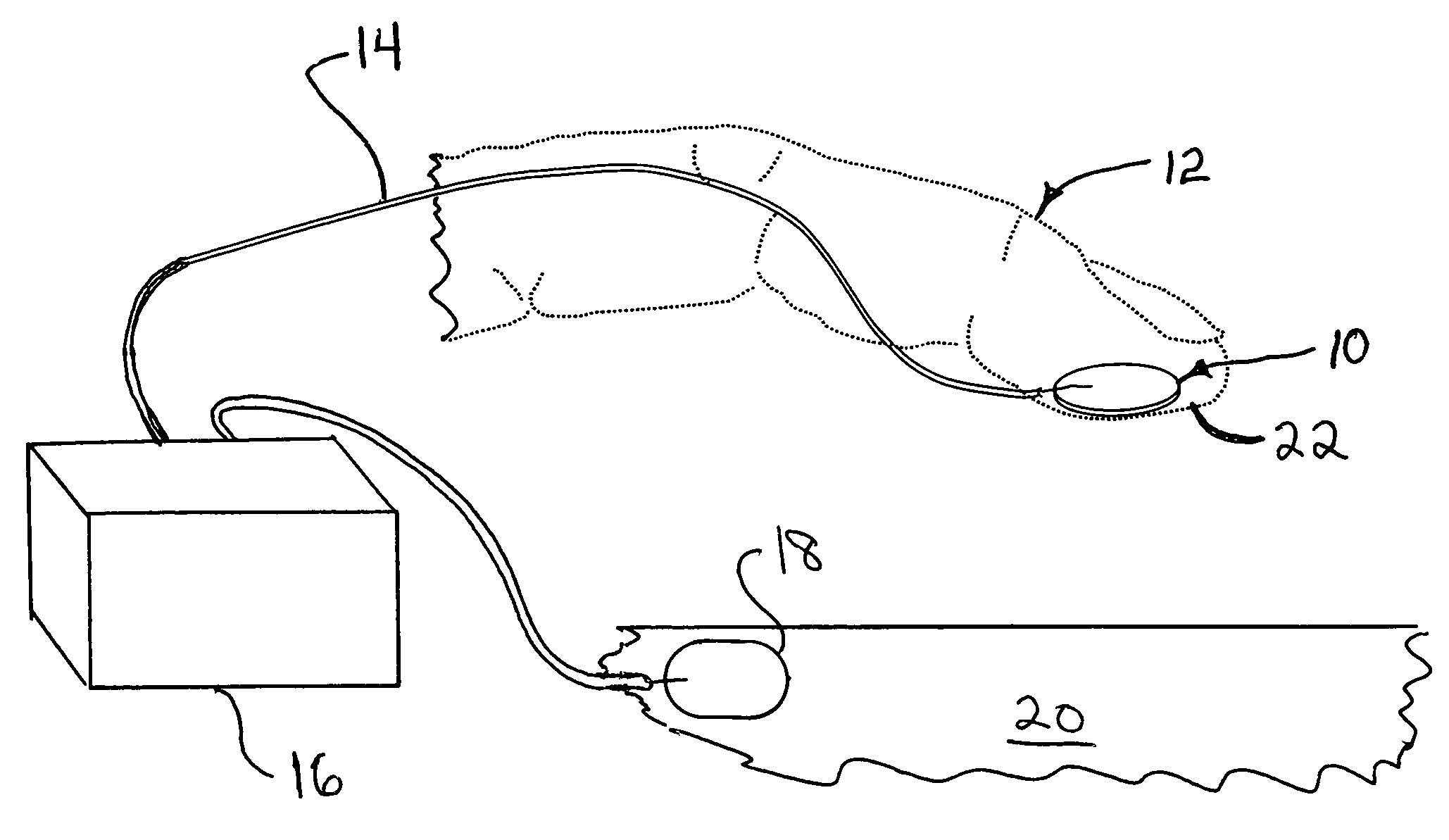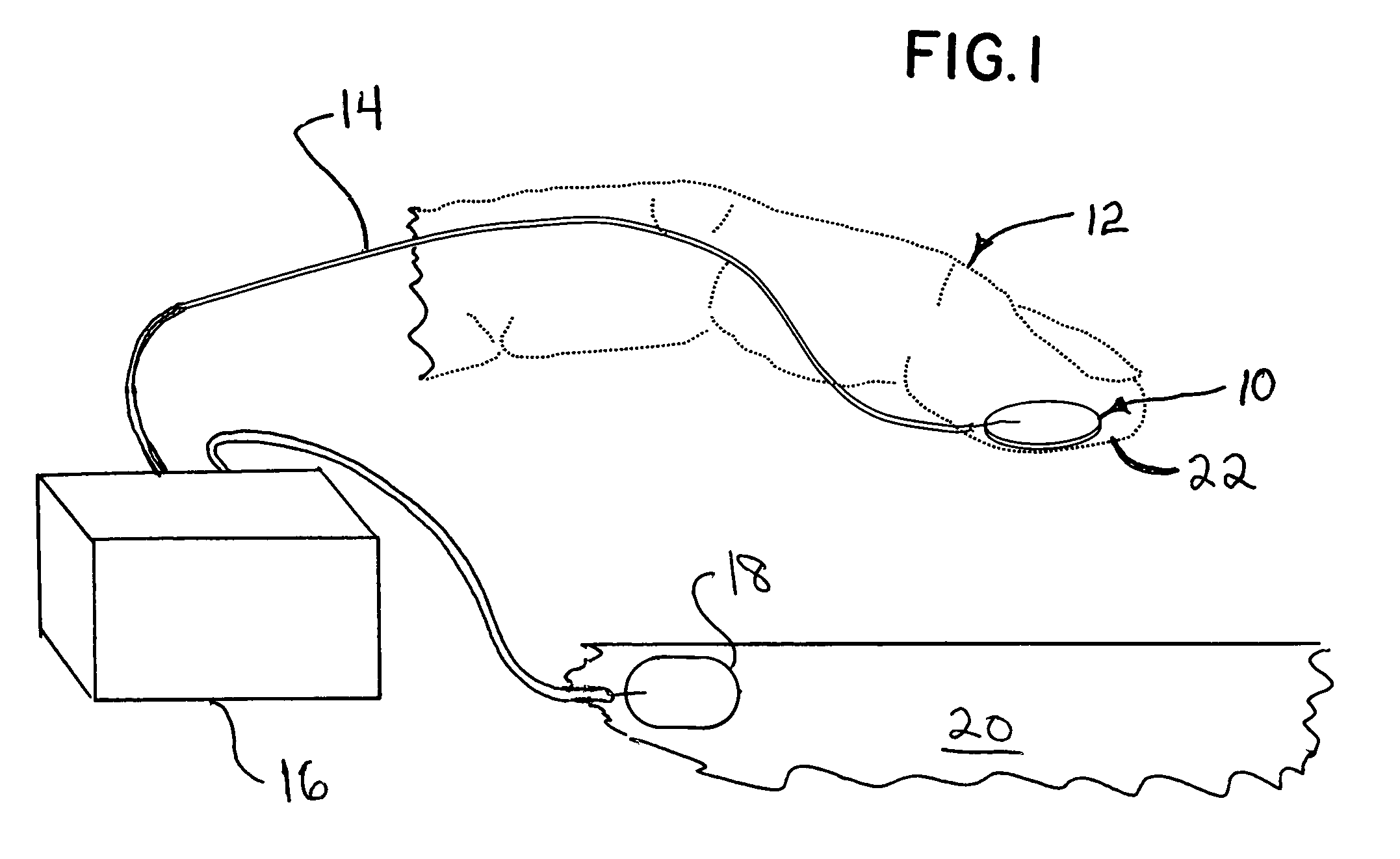Transcutaneous electrical nerve locator
a technology of electrical nerves and locators, which is applied in the field of transcutaneous electrical nerve locators, can solve the problems of high variability of success, many failures of initial placement of needles, and additional challenges, and achieve the effect of low risk and highly accurate specification of nerve sites
- Summary
- Abstract
- Description
- Claims
- Application Information
AI Technical Summary
Benefits of technology
Problems solved by technology
Method used
Image
Examples
Embodiment Construction
[0010]Referring particularly to FIG. 1, a contact electrode 10 having an electrically conductive surface is retained to the palpating finger 12 of a clinician. This electrode 10 is connected by means of a wire 14 to a source of current pulses 16. Another electrode 18 attached to the patient 20 at a remote location is also connected to the current source 16 to complete the electrical circuit. In the preferred embodiment, the contact electrode 10 is made from a substantially circular layer of conductive metal having a thickness of 600 micrometers and a diameter of 9 mm. This surface area is important although it can be appreciated that an exact circular shape is not required. A larger contact area does not permit exact location of the nerves, while a smaller contact area intensifies the current density and can produce pain upon delivery of a stimulus adequate to activate the underlying nerve. The edges of the surface of the electrode 10 that is applied to the patient's skin is rounded...
PUM
 Login to View More
Login to View More Abstract
Description
Claims
Application Information
 Login to View More
Login to View More - R&D
- Intellectual Property
- Life Sciences
- Materials
- Tech Scout
- Unparalleled Data Quality
- Higher Quality Content
- 60% Fewer Hallucinations
Browse by: Latest US Patents, China's latest patents, Technical Efficacy Thesaurus, Application Domain, Technology Topic, Popular Technical Reports.
© 2025 PatSnap. All rights reserved.Legal|Privacy policy|Modern Slavery Act Transparency Statement|Sitemap|About US| Contact US: help@patsnap.com


